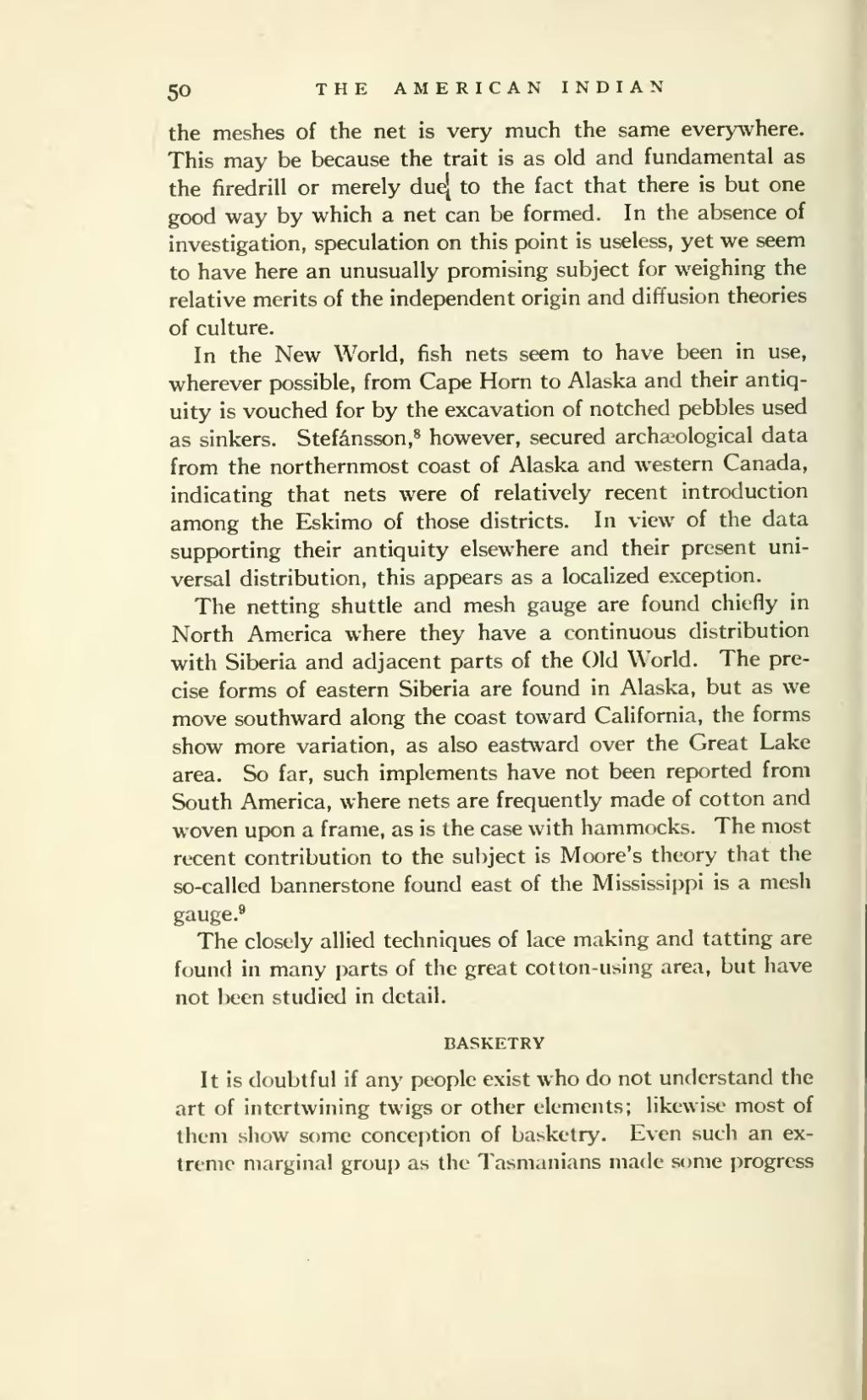the meshes of the net is very much the same everywhere. This may be because the trait is as old and fundamental as the firedrill or merely due to the fact that there is but one good way by which a net can be formed. In the absence of investigation, speculation on this point is useless, yet we seem to have here an unusually promising subject for weighing the relative merits of the independent origin and diffusion theories of culture.
In the New World, fish nets seem to have been in use, wherever possible, from Cape Horn to Alaska and their antiquity is vouched for by the excavation of notched pebbles used as sinkers. Stefánsson,[1] however, secured archæological data from the northernmost coast of Alaska and western Canada, indicating that nets were of relatively recent introduction among the Eskimo of those districts. In view of the data supporting their antiquity elsewhere and their present universal distribution, this appears as a localized exception.
The netting shuttle and mesh gauge are found chiefly in North America where they have a continuous distribution with Siberia and adjacent parts of the Old World. The precise forms of eastern Siberia are found in Alaska, but as we move southward along the coast toward California, the forms show more variation, as also eastward over the Great Lake area. So far, such implements have not been reported from South America, where nets are frequently made of cotton and woven upon a frame, as is the case with hammocks. The most recent contribution to the subject is Moore's theory that the so-called bannerstone found east of the Mississippi is a mesh gauge.[2]
The closely allied techniques of lace making and tatting are found in many parts of the great cotton-using area, but have not been studied in detail.
BASKETRY
It is doubtful if any people exist who do not understand the art of intertwining twigs or other elements; likewise most of them show some conception of basketry. Even such an extreme marginal group as the Tasmanians made some progress
